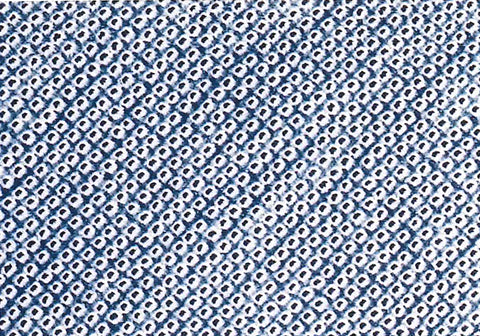
The word Shibori comes from the Japanese verb root “shiboru,” meaning “to wring, squeeze, press.”
Shibori a traditional Japanese resist-dyeing technique that has been around longer than any other fabric dyeing method. The pattern is made by binding, stitching, folding, twisting, compressing, dyeing, and then releasing the binding pressure to reveal the pattern. Commonly mistaken for tie-dye in the West, the original Shibori techniques were ancestral, handed down exclusively within Japanese artisan families.

When the cloth is returned to its two-dimensional form after dyeing, the design that emerges is the result of the bound and tied three-dimensional shape. The cloth sensitively records both the form and the pressure; the “memory” of the tied shape remains imprinted in the cloth, often creating a unique texture. Each and every detail of Shibori represents a tied knot made by an artisan’s hands.

There is an infinite number of ways one can bind, stitch, fold, twist, or compress cloth for shibori, and each way results in very different patterns.

Kanoko Shibori, the most popular variation of the Shibori technique, involves tying cloth in small pinches to achieve the desired pattern. Each individual knot is hand-tied, creating small variations in the shapes, and is carefully released by a craftsman one at a time.

Kumo Shibori, or literally spider tie-dye, creates a pattern of spider web-like shapes. This technique involves tying sections of fabric with fibers evenly. The result is a very condensed spider-web design. There is no standard design, so the pattern is in the hands and sense of the artisan.

Miura Shibori is also known as looped binding. Using a hooked needle and plucking sections of the fabric, the released pattern resembles water ripples. The pattern achieved depends on how tightly the fabric is bound and where it is bound, so each pattern is unique itself.







